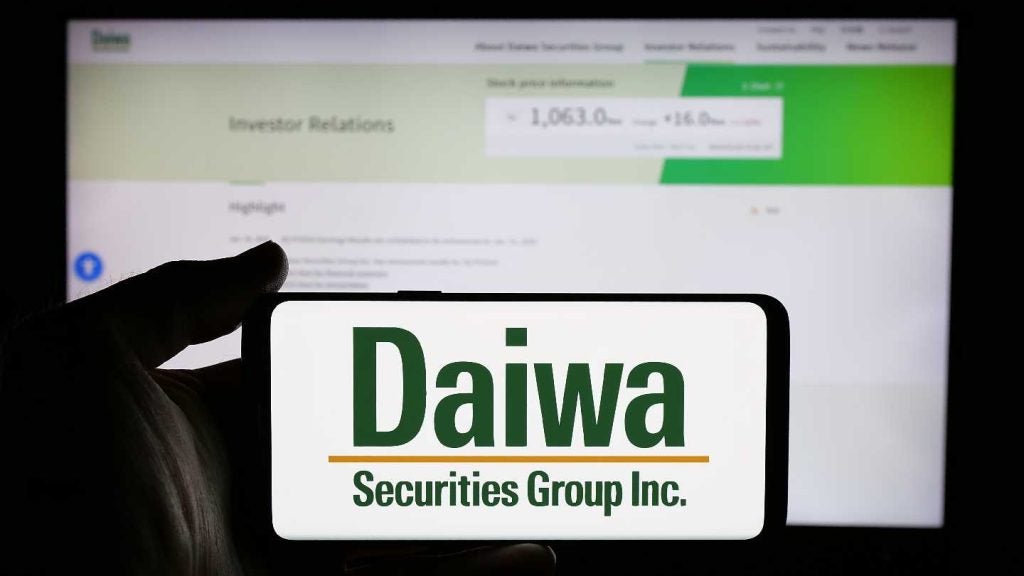
The private banking industry has been slow in adopting social media. However, with more clients and prospects having an active social media presence, private banks and wealth managers are not only increasing their activities on these platforms, but are creating client-focused communities. Vania Goncalves finds out more

Access deeper industry intelligence
Experience unmatched clarity with a single platform that combines unique data, AI, and human expertise.
Platforms such as Facebook, Twitter, LinkedIn, Instagram, and YouTube create content, branding and engagement opportunities for private banks and wealth managers to leverage social media — and they are coming to terms with this reality.
Social media’s rising popularity is highlighted by the fact that around 2.8bn people are active social media users, according to the Digital in 2017 Global Overview report from We Are Social and Hootsuite. By comparison, there were 2.3bn active social media users in the We Are Social Digital in 2016 report.
Rebecca Mooney, vice president and head of brand and marketing at RBC Wealth Management, says referring to the North America market: “Clients and employees expect us to be active on established channels because that is where they are communicating. Whether for business development, brand building or recruitment, a social media presence is key to how we inform, engage and support the communities where we have a business presence.”
Expectations for private banks to engage with existing clients and new prospects on social media are stronger than ever before. Graham Aikin, owner and director of HNW Social Media Solutions and a former private banker, warns it can be damaging to not have a social media strategy.

US Tariffs are shifting - will you react or anticipate?
Don’t let policy changes catch you off guard. Stay proactive with real-time data and expert analysis.
By GlobalDataAikin says: “Generally speaking, [the private banking industry] is probably one of the slowest industries to use social media, because of the issues around confidentiality, and data protection.”
According to Aikin, only in the last three to four years have private banks started to realise that they “really need” to be on social media, as that is where their clients are and they have expectations to find their private bank there as well.
He adds: “I think it is dangerous for them to not have a social media presence, because they can potentially be left behind by their competition. I think, as a minimum, they [private banks] should have a LinkedIn company page.”
Brand awareness
More and more private banks and wealth managers are adopting a social media strategy focusing on either brand awareness or/and client acquisition.
Steven Hewlett-Light, head of digital content and channels at Coutts, says they see social media as an “opportunity” to increase brand awareness.
He explains: “For us the key is that we see it as an opportunity of letting more people know about our brand. It increases engagement and awareness of what we are doing as a brand and what we offer, and I think it is giving people a chance to sample and understand a little more about Coutts before, perhaps, they have a conversation.
“A typical behaviour that we are seeing is an increasing amount of people searching for Coutts or searching for a specific person who works for Coutts before they have a conversation with them — we typically see that searching going on in LinkedIn. It is allowing people to really understand a little bit more and inform themselves a little bit more about the brand before they have that first conversation.”
Hewlett-Light adds: “One of the things that we do is pushing out content and our thought leadership — that attracts people from a vast array of backgrounds into coutts.com.”
Quality of content
The social media strategy for RBC Wealth Management in North America is focused on the quality of the content that is shared. Mooney says: “We want to make our insights, updates and client interaction as convenient, and as accessible as possible for our clients and prospective clients.
“We primarily use social media to inform and engage with our clients, and prospective clients, in key North American cities. Social media is an essential way to connect with our high net worth audience on a two-way platform.
“Social media begins and ends with good content, so we focus on quality over quantity. Using the funnel model as an example, we may share and promote content with a wider appeal to cast a net among a broader audience. As you move down the funnel we get further into a paid strategy. Here we are looking to promote specific pieces of content to more segmented, target audiences.”
She adds: “Continuing to the bottom of the funnel, we are looking to drive audience back to our global corporate websites where they can really take a deep dive into the content produced specifically for their needs. Ultimately, we want our clients and prospective clients to see our digital properties as a resource to help them with their specific needs and as a trusted partner in their wealth journey.”
With an eye on the future, Mooney says RBC sees the importance of social media in relationship management growing, as the use of social media is evolving and increasingly becoming an accepted communications channel in the industry.
Relationship-building value
Social media is seen as a way of building relationships with the next generation of clients. This is all the more important because ultra high net worth individuals across the globe are expected to transfer more than $3.9trn between generations over the next decade, according to the Wealth-X and NFP report Preparing for Tomorrow: A Report on Family Wealth Transfers.
Aikin says: “Social media is a fantastic opportunity to start talking to that next generation of clients and building relationships with that next generation of clients now, so that when the parents and grandparents do start transferring wealth, the private bank stands in a much better chance of having an existing relationship with those children and are able to retain the assets.”
He adds: “That for me is probably the biggest way social media can be used in the next five years, is that intergenerational planning with multiple generations across family.”
In addition to promoting brands, sharing content and driving traffic to corporate websites, social media is also being adopted as a digital business card by relationship managers.
Thierry Derungs, BNP Paribas Wealth Management chief digital officer, says: “We encourage our relationship managers when they meet a prospect in an event instead of providing a business card, it is much better to be [connected] on social media, especially on LinkedIn — which is the one we are focusing globally.”
“This contributes to make the relationship manager at the front of mind of the future client.”
Olivier Maire, EMEA managing director at Hearsay Systems, adds: “Think about social [media] as a kind of digital business card.”
Case studies
BNP Paribas Wealth Management and UBS showcase two examples of how social communities are being built.
BNP Paribas Wealth Management, for example, has recently launched a community, named Leaders’ Connection, which connects eligible investors to facilitate co-investments and give them opportunities to share their views on investment opportunities.
Derungs says: “We have just released a community called Leaders’ Connection in which we have built a special place for our high net worth clients where they can meet, discuss and exchange on potential business that they could do together. Building [this] kind of community to ease connections between clients to do business, even if the business is not done with us, is part of our duties to support our clients.”
He adds: “If someone is proposing inside the group to invest on something, the other clients know that they are not discussing it with someone from the crowd, but with really highly qualified clients.”
The digital platform is available on smartphones and tablets to key clients with over €100m of assets under management.
UBS has recently announced a partnership with Singapore-based technology provider FinChat to develop a solution that will allow secured social chat communication between clients and advisers in Asia Pacific.
The platform will be created at the EVOLVE – UBS Centre for Design Thinking and Innovation.
Dirk Klee, UBS Wealth Management COO and head of digital strategy, said in a statement: “It is important for us to break any impasse between the ever-increasing usage of social media platforms and rise in compliance monitoring standards. In the future we look to engage with thousands of clients through their favourite social messaging platforms.”
Long journey ahead
The private banking industry is making progress in leveraging social media and creating communities and platforms where clients can engage and communicate.
However, much remains to be done before the industry can take advantage of the full potential that social media offers.
Aikin says: “ [The industry has] made good progress in the last three or four years, but I think there is a lot more they can do. I follow most private banks on LinkedIn and twitter and they all do more or less the same thing. There is no one really standing out by doing something very different.”
Hewlett-Light agrees by saying that the industry is “ probably a little bit behind the curve”, and highlights that Coutts is on a learning journey — training on LinkedIn will be provided later in the year.
“The biggest thing that we really need to do to spring boards and really leverage the power of social media is to engage the frontline, get our private bankers comfortable in that space and really make sure that they are doing it in a safe, compliant and regulated way,” says Hewlett-Light.
Aikin explains that the best social media strategy is one that uses “bespoke content across multiple platforms in a compliant way”.
“Instagram is going to be about photographs of events. For me, YouTube should be about educating clients, so lots of little short videos about what is a pension, what is an ISA, what discretionary investments mean — I think It is a great opportunity to use YouTube as an educational and training tool.
“LinkedIn for me is all about the individual relationship managers using it to connect with clients and introducers, and then twitter is more about the real time activity — to provide real time market commentary, and market updates,” Aikin concludes.







